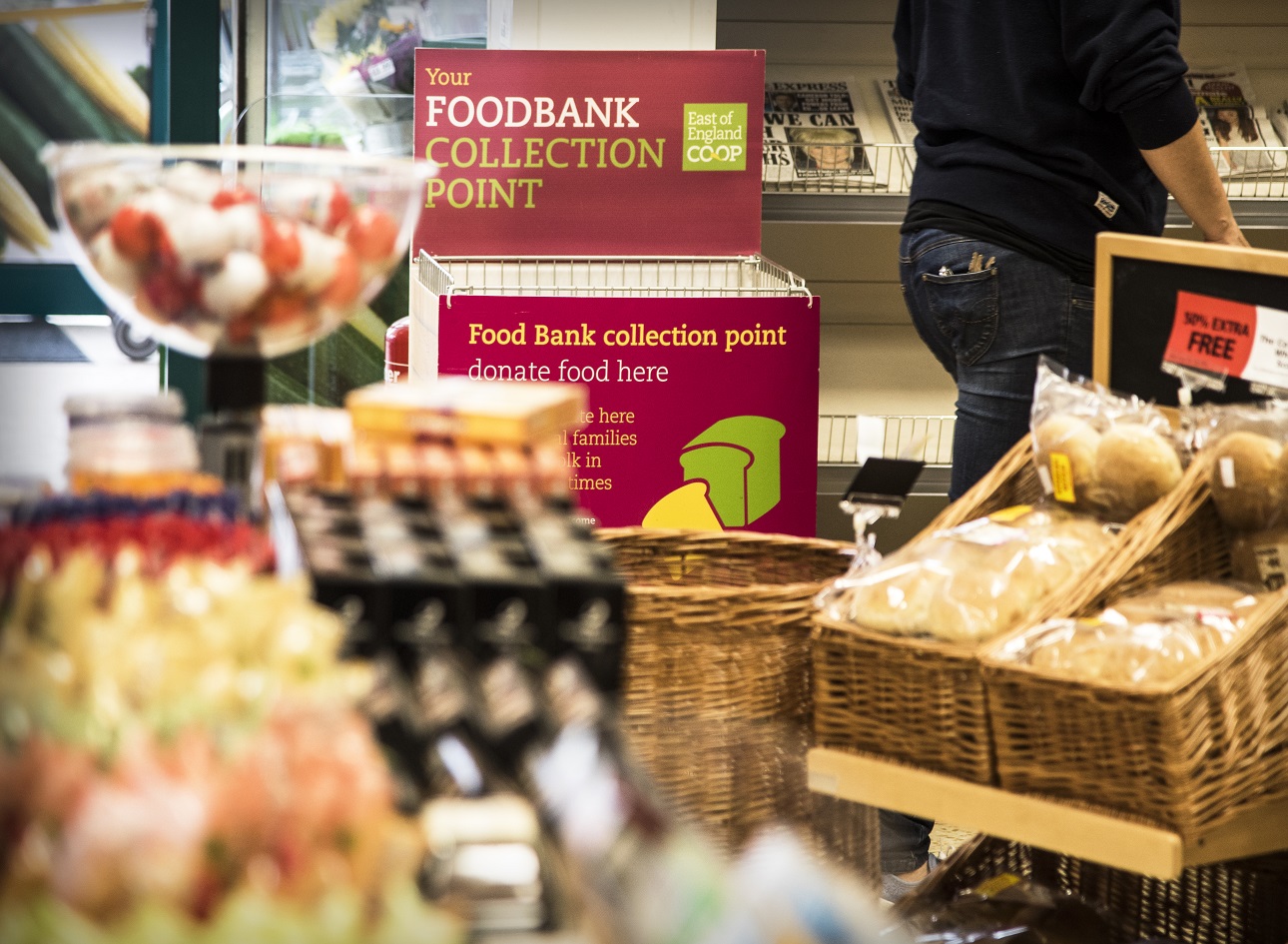Food bank use in the UK has risen dramatically – the Trussell Trust (which runs about two-thirds of UK food banks) reported a 21-fold increase in demand for food assistance between 2010/2011 and 2017/2018 (1).
The cause of this increase has been disputed, although the government is increasingly recognising the role that austerity and welfare reforms have played (2). Housing support has been particularly hard hit by these changes, and concerns about a housing crisis have been raised alongside concerns about food bank use. However, a relative lack of data means that little is known about how concerns about housing relate to concerns about food insecurity and dependence on food banks.
A large survey of food bank users across Great Britain was conducted in 2016/2017 (3). We used data from this survey to explore the housing situations of people using food banks and compare this where possible to the housing of the overall population. The findings were stark. 82% of food bank users who took part in the survey were living with at least one serious housing issue, including current rent arrears, difficulty affording rent, poor housing conditions, or homelessness.
Nearly 17% of survey respondents were homeless, and an additional 15% had slept rough in the past 12 months. By comparison, estimates suggest about 0.005% of the population are homeless. Renters were also overrepresented in the data.
Approximately 18% of British households live in the social rented sector (e.g. local authority or housing association homes), and 20% in the private rented sector. However, among food bank users these figures are much higher, at 57% and 38% respectively. Just 4% of respondents lived in owner-occupied homes.
The overrepresentation of renters likely has a number of causes. In order to access a food bank, users must first be referred (4). Social housing providers have the ability to make these referrals, while private landlords and mortgage providers do not. Social housing is also highly residualised, reserved only for those most in need (although this varies across the UK somewhat as housing is a devolved matter). Because of this the social rented sector is home to a high number of very low-income households (5) and a higher proportion of households which include disabled people (6). Disability is a risk factor for deep poverty, particularly following government changes to disability support (7). Support for renters in social housing has also been affected by the ‘bedroom tax’, which penalises those deemed to be ‘underoccupying’ their home.
On the other hand, private renters face higher housing costs (averaging £193 per week in England in 2017-18 compared to £103 in the social rented sector (8)) and have experienced significant and ongoing reductions in housing benefit – housing benefit now covers the full rent for just 10% of low-income private renters (9). A survey by Shelter found that 20% of low-income private renters had cut back on food in order to afford their rental costs (10).
However, affordability issues were widespread among the survey respondents. A third had experienced an increase in their housing costs (including utility bills) in the three months prior to attending the food bank, with approximately a quarter of renters (both social and private) finding it very difficult to pay their rent. Nearly 60% couldn’t afford to adequately heat their home, an indicator of destitution.
Respondents were also concerned about the security of their housing, particularly private renters. Nearly one third of private renters thought they “might or would definitely” be forced to move out of their home in the coming 12 months, whereas over 60% of social renters were confident that they would be able to stay in their home. Yet, frequent moves were a feature for many of the survey respondents: 42% of all respondents had moved in the last 12 months (rising to nearly 47% for private renters) compared to approximately 9% of households in England overall (11).
Housing conditions were also found to be very poor among food bank users, particularly those living in owner-occupied homes who are responsible for their own maintenance. It is estimated that 15% of households in the UK are living with leaks, damp or rot. We found that the levels experienced by food bank users are considerably higher than this national average, affecting 55% of owners, 26% of social renters and 39% of private renters.
The results of this study demonstrate the significant difficulties faced by food bank users in two vital areas of their lives and illustrate the inadequacy of food banks as a means of tackling these issues (12). Instead, policy makers must recognise the extent of hardship faced and move to ensure that people are able to meet their fundamental needs. A good place to start would be to realign housing benefits with housing costs, remove the benefit cap, and ensure that housing is safe and secure.
References:
1 https://www.trusselltrust.org/2018/04/24/benefit-levels-must-keep-pace-rising-cost-essentials-record-increase-foodbank-figures-revealed/
2 https://www.theguardian.com/society/2019/feb/11/universal-credit-rollout-linked-to-rising-food-bank-use-amber-rudd-admits
3 https://www.trusselltrust.org/wp-content/uploads/sites/2/2017/06/Technical-Report_FINAL.pdf
4 https://www.trusselltrust.org/what-we-do/
5 https://assets.publishing.service.gov.uk/government/uploads/system/uploads/attachment_data/file/774820/2017-18_EHS_Headline_Report.pdf
6 http://www.lse.ac.uk/business-and-consultancy/consulting/assets/documents/No-Place-Like-an-Accessible-Home.pdf
7 https://www.jrf.org.uk/file/49783/download?token=7FyqOfvT&filetype=full-report https://theconversation.com/benefit-changes-will-entrench-the-poor-in-food-bank-britain-75422
8 https://assets.publishing.service.gov.uk/government/uploads/system/uploads/attachment_data/file/774820/2017-18_EHS_Headline_Report.pdf
9 https://www.ifs.org.uk/uploads/publications/comms/R132.pdf
10 Shelter 2017. Far From Alone: Homelessness in Britain in 2017, London, Shelter.
11 https://assets.publishing.service.gov.uk/government/uploads/system/uploads/attachment_data/file/774820/2017-18_EHS_Headline_Report.pdf
12 https://theconversation.com/why-giving-surplus-food-to-charities-is-not-a-solution-to-food-poverty-72210
